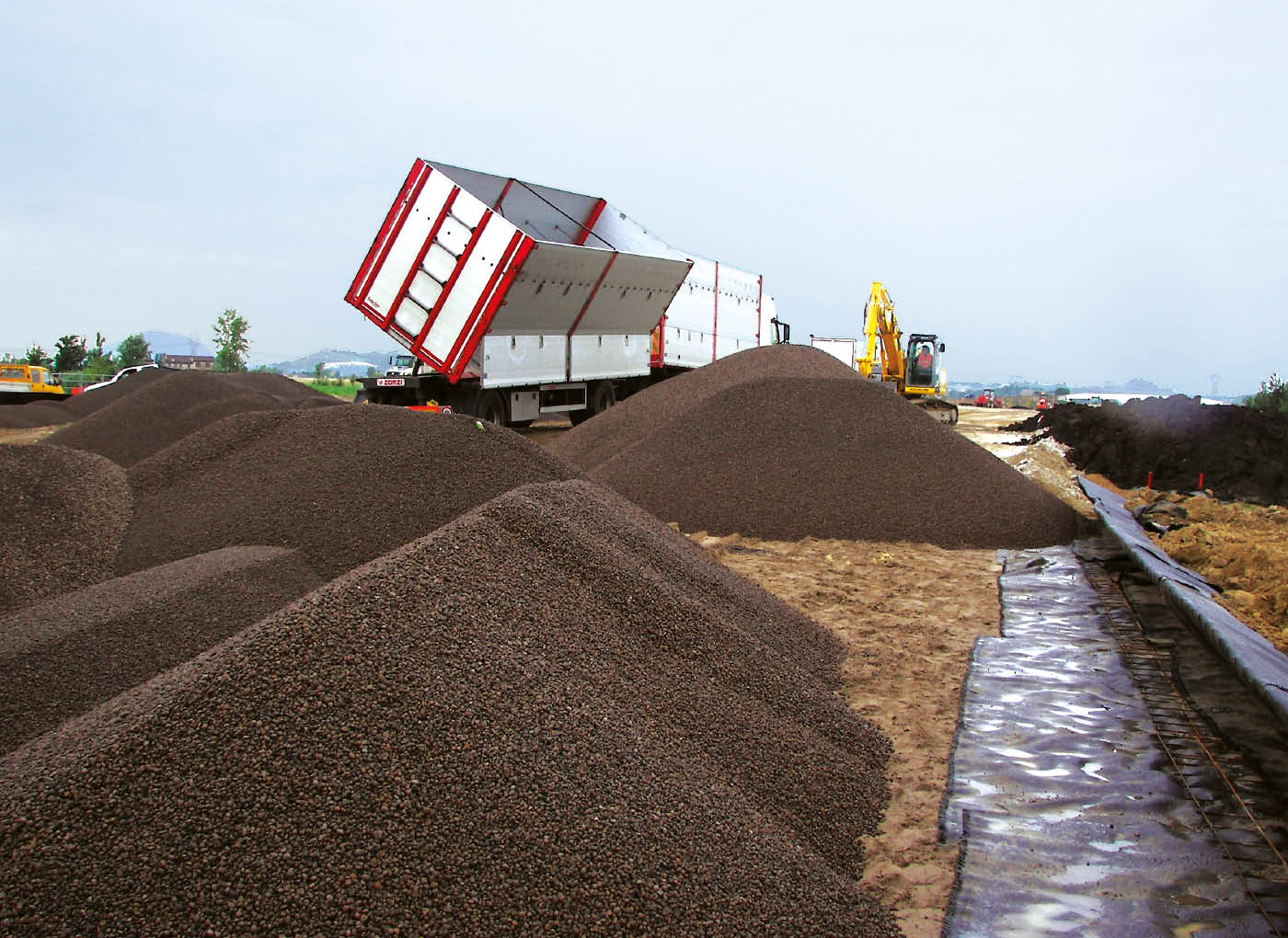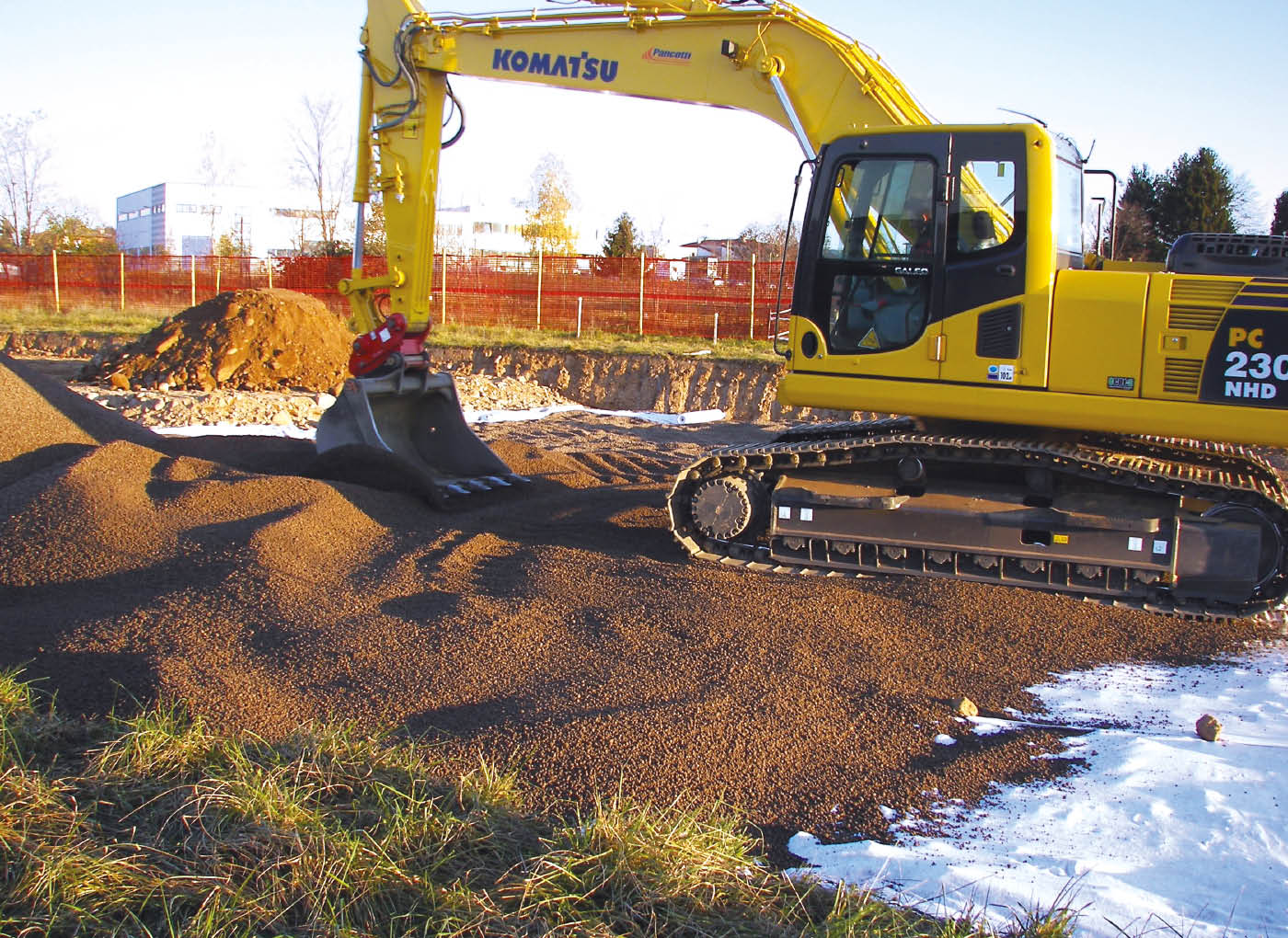The angle of friction of unbounded expanded clay is obtained from triaxial tests by varying the lateral confining pressure of the aggregate and its degree of compaction.
For design purposes, with a confining pressure of 200 kPa (which is typical of the most important geotechnical applications), a value of approximately 40°and cohesion c=0 can be assumed.
The surface stiffness of expanded clay lightweight embankments is determined by plate load testing. The stiffness values obtainable will depend on the technical solution chosen, the granulometry of the expanded clay, and the degree of compaction.
The various methods for constructing an embankment generally include a finishing layer to distribute the loading.
The graph shows the trend of the modulus of deformation Md as a function of the relative density, for an 80 cm thick layer of 0-30 mm expanded clay finished with 20 cm of granular mix.
If necessary, an asymptotic value of Md = 200 Kg/cm2 can be considered for design purposes, which corresponds to a degree of compaction of the aggregate that is easy to attain using ordinary ground-compacting machinery (plate vibrators, compaction rollers).
Values for the modulus of deformation Md as a function of the compaction of individual layers and different granulometries of Laterlite Expanded Clay are available by request.
Laterlite Expanded Clay is an inert, vitrified, dimensionally stable material whose volume remains unchanged in contact with water.
When the inter-granular voids (i.e. the voids between the granules, which interconnect with one another) are immersed in water they immediately become saturated; the intra-granular pores (the voids within each granule) only fill more slowly with water by capillary action, and some of them will never become saturated.
The excellent drainage capacity of expanded clay is due to this network of inter-granular pores, whilst the water absorption is due to the intra-granular pores.
In accordance with European Standard EN 13055-2 (par. 4.8), the coefficient of water absorption of expanded clay is determined by immersing a dry sample in water for 24 hours. Comparison of its weight before and after the test (of the drained material) gives the quantity of water that has been absorbed by the granules (this will vary, depending on the granulometry).
For design purposes, the coefficient of water absorption of Laterlite Expanded Clay can be conservatively considered as always less than 25% by weight.
Laterlite Expanded Clay is also available in the special Laterlite Plus dry hydrophobic variant, which maintains its extremely low coefficient of water absorption over time.








